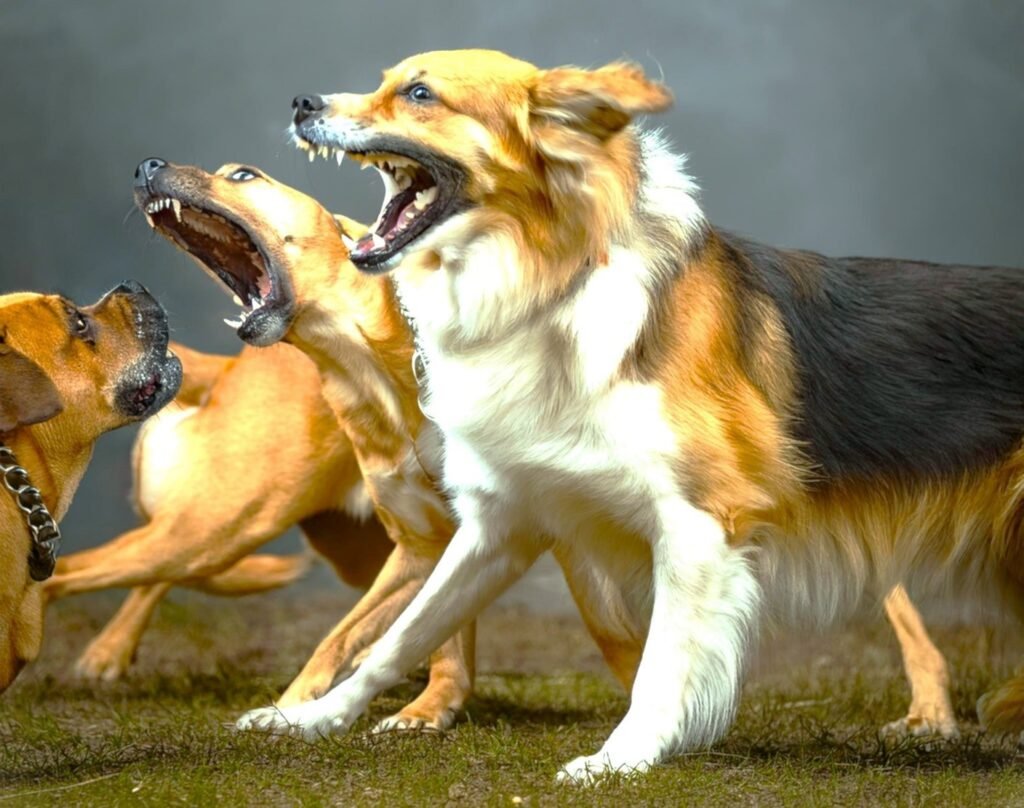
Outline
- Introduction
- Understanding Types of Aggressive Behavior in Dogs
- Causes of Aggression:
- Symptoms and signs of aggressive behavior in dogs
- What to Do With Aggressive Dogs?
- Top 10 Most Aggressive Dogs
- Diagnosis and assessment of aggressive dogs
- Medicine for Aggressive Dogs
- Understanding Rescue Options for Aggressive Dogs
- Preventive Measures / Preventing Aggression in Dogs
- How to Train Aggressive Dogs?
- Conclusion
- Frequently asked questions
Introduction:
Meeting aggressive dogs can be a stressful and potentially dangerous situation. Knowing how to deal with such situations effectively is critical for maintaining safety and avoiding harm.
This comprehensive guide will delve into strategies for managing aggressive dogs, provide insights into the most aggressive dog breeds, discuss training techniques, and go over other important topics like medication and rescue options.
Let’s dive in.
Understanding Types of Aggressive Behavior in Dogs
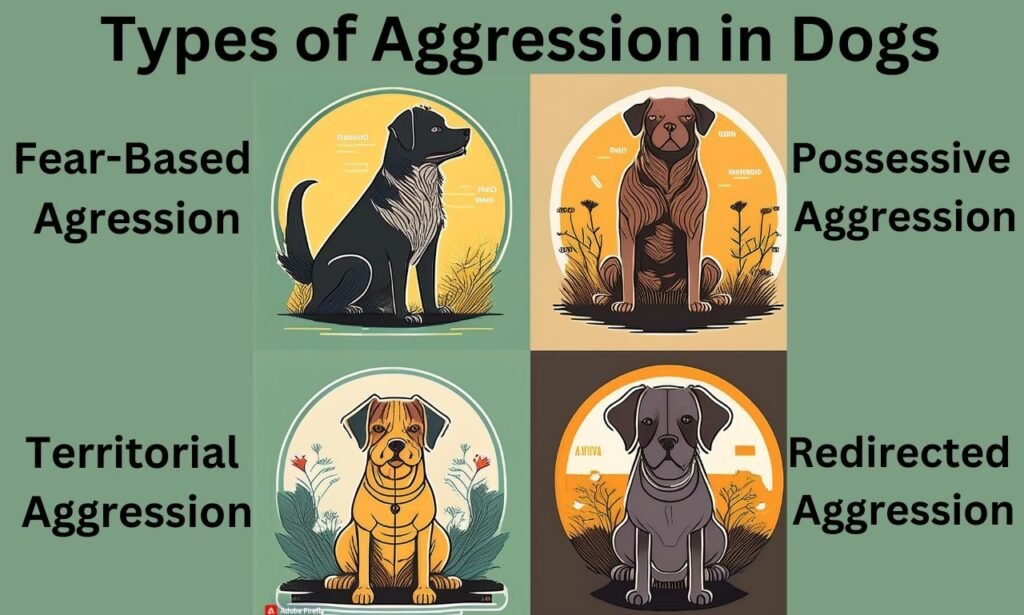
Aggression in dogs can take many forms, including growling, barking, snapping, and biting. Understanding the underlying causes of aggressive behavior is critical for effectively managing and reducing such responses. The following are the top aggressive dogs:
1. Fear-Based Aggression:
Dogs who display fear-based aggression frequently do so because they feel threatened or trapped. This type of aggression is common in dogs that have been traumatized or who have not been properly socialized. When they perceive a threat, they may react aggressively as a means of defense.
2. Territorial Aggression:
Certain dogs are aggressive toward people who enter their perceived territory. This type of aggression is frequently directed at strangers or other animals who the dog believes are invading its territory.
3. Possessive Aggression:
When dogs are overly possessive of food, toys, or other resources, they may become aggressive. This behavior is commonly observed in dogs who have not been taught to share or who are overly protective of their belongings.
4. Redirected Aggression:
When a dog is unable to confront the source of its frustration, it may direct its aggression toward a person or another animal. For example, if a dog is restrained by a leash and feels unable to reach the source of its agitation, it may become aggressive toward another dog or person.
Causes of Aggressive Behavior in Dogs:
Dogs show aggressive behaviors due to certain factors or triggers. These factors are the main reasons that trigger aggression in most dogs. A few are given below:
Genetic factors
Genetics have a significant impact on a dog’s temperament and aggression. Certain aggressive dogs breeds have been selectively bred for characteristics that may increase the likelihood of aggressive behavior.
Environmental influences
The environment in which a dog is raised and lives has a significant impact on its behavior. Stressful or unstable environments can exacerbate aggressive behavior.
Lack of socialization
Dogs who are not properly socialized during critical developmental periods are more likely to show fear and aggression toward unfamiliar people, animals, and situations.
Trauma and Abuse
Past trauma and abuse can leave permanent scars on a dog’s psyche, prompting aggressive behavior as a defense mechanism.
Signs and Symptoms of Aggressive Behavior in Dogs
Early Warning Signs
Early signs of aggression include subtle behaviors like stiffening, lip licking, and avoiding eye contact. Recognizing these early warning signs can help you address aggression before it escalates.
Body Language
Understanding a dog’s body language is essential for identifying aggression. The warning signs are raised hackles, rigid body posture, and a direct stare.
Vocalizations
Growling, barking, and whining can all indicate aggression. Each vocalization is intended as a warning and should be taken seriously.
Behavioral Patterns
Aggressive dogs frequently exhibit predictable behavioral patterns, such as guarding specific areas or objects and reacting negatively to certain stimuli.
What to Do With Aggressive Dogs?
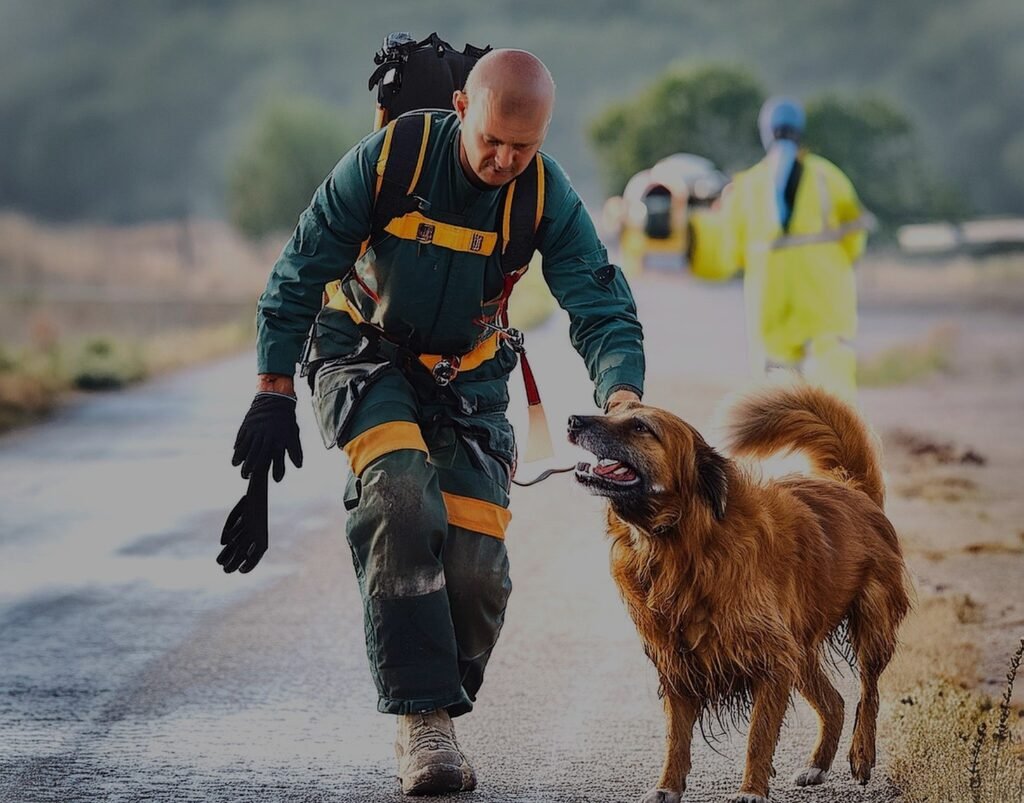
If you encounter an aggressive dog, how you respond can significantly impact the outcome of the situation. Here are the necessary steps to follow:
Stay Calm:
It is critical to maintain your composure. Dogs can sense human emotions, so if you panic or become anxious, the dog may become agitated as well. Keep as calm as possible to avoid escalating the situation.
Avoid eye contact:
Dogs may perceive direct eye contact as a threat. Instead, keep your gaze averted and avoid looking directly at the dog.
Do not run.
Running away from an aggressive dog may result in a chase response. Instead of running, attempt to slowly and steadily back away from the dog.
Use a firm voice.
Command the dog in a firm, confident tone. Phrases such as “no” or “go away” can effectively deter the dog’s aggressive behavior. Avoid using a high-pitched or fearful tone, as this may aggravate the dog further.
Back away, slowly:
If possible, distance yourself from the aggressive dog. Move slowly, and avoid turning your back on the dog. This helps to reduce the likelihood of provoking a bite.
Protect Yourself:
If an aggressive dog approaches, shield yourself with any available object, such as a jacket, bag, or stick. This can help form a barrier between you and the dog.
Seek Help:
If the situation becomes dangerous and you are unable to control the aggressive dog on your own, contact animal control or a professional dog trainer.
Top 10 Most Aggressive Dogs
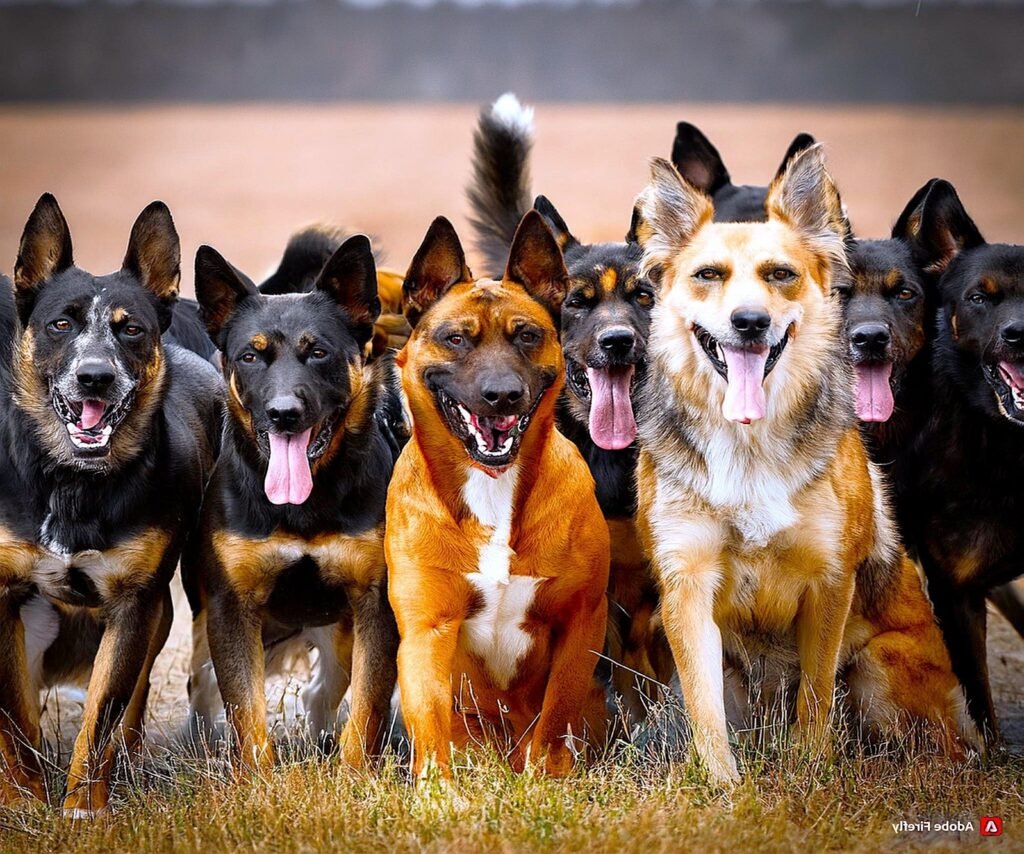
While aggression can occur in any breed, certain aggressive dog breeds are more likely to exhibit aggression due to their history, temperament, or physical characteristics. Most aggressive dogs within these breeds may exhibit varying behaviors, and responsible ownership and training play an important role in determining a dog’s temperament. These are the top 10 aggressive dogs:
Pit Bull Terrier:
Because of their muscular build and powerful bite, Pit Bulls are frequently referred to as one of the most aggressive dogs. When properly trained and socialized, many Pit Bulls become well-behaved and friendly.
Rottweiler:
Rottweilers are known for their protective nature but can be most aggressive dogs if not properly trained or socialized. To control their behavior, they must be trained consistently and reinforced positively.
German Shepherd:
German Shepherds are intelligent, strong-willed dogs who can become aggressive if not properly trained or socialized from a young age.
Bullmastiff:
Bullmastiffs are protective and can become aggressive toward strangers if they perceive a threat. Proper training and socialization are required to control their behavior.
Husky:
Huskies are energetic and strong dogs who may become aggressive if bored or their needs are not met. Proper exercise and mental stimulation are critical for controlling their behavior.
Doberman Pinscher:
Dobermans are known for their loyalty and protectiveness. They can be aggressive if not properly socialized or trained, and they need consistent and positive reinforcement.
Chow Chow:
Chow Chows are known for their reserved and independent demeanor. They may become the most aggressive dogs if they are not properly socialized or if they feel threatened.
Dachshund:
Despite their small size, Dachshunds can be aggressive, particularly if not properly trained or socialized. They may become defensive or territorial.
Jack Russell Terrier:
Jack Russells are energetic and assertive dogs who can become aggressive if not properly trained or overexcited.
Dalmatian:
Dalmatians can be aggressive if they are not properly socialized or if their high energy levels are not controlled. They need consistent training and mental stimulation.
Diagnosis and assessment of aggressive dogs
Professional evaluations:
A professional evaluation by a veterinarian or certified animal behaviorist is required to accurately diagnose and treat aggressive behaviors.
Behavioral assessments:
Behavioral assessments can aid in determining the specific type and triggers of a dog’s aggression, laying the groundwork for a customized management plan.
Medical examinations:
Aggression can be associated with medical issues such as pain or neurological conditions. A thorough medical examination can help rule out or identify these potential causes.
Medicine for Aggressive Dogs
In some cases, medication for aggressive dogs may be required to manage severe aggression or underlying medical conditions.
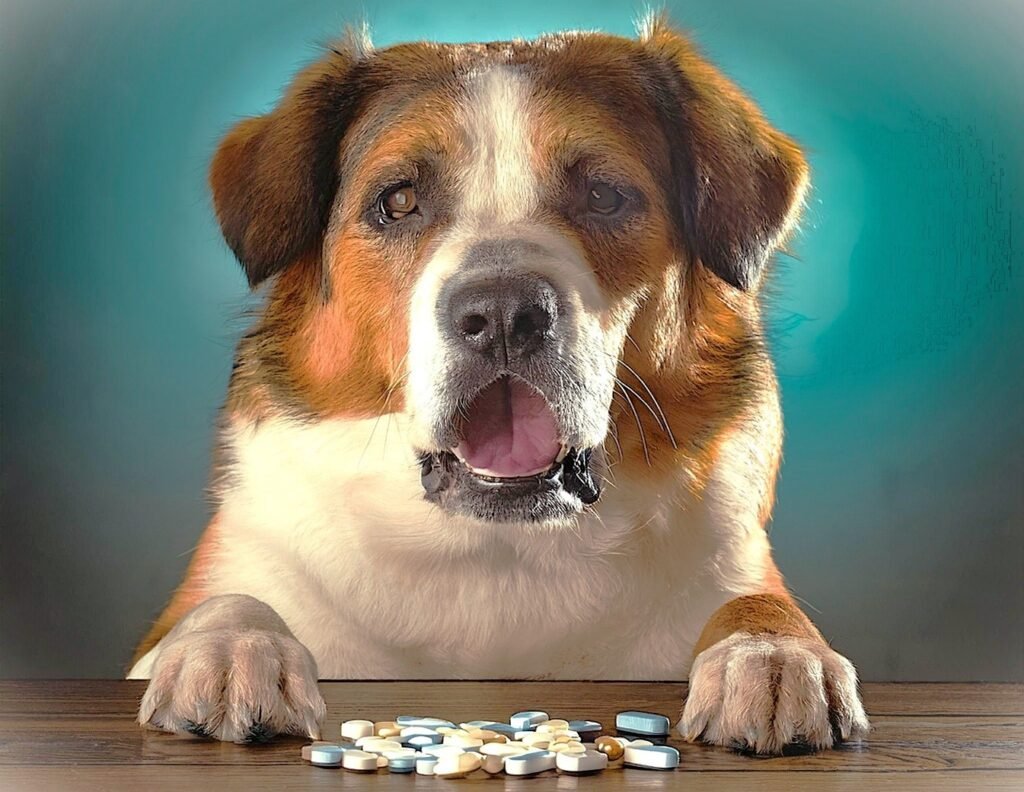
When to Consider Medication:
Medication for dogs should be considered when aggression is severe and poses a serious risk. It can be combined with behavioral training to help manage aggression.
Types of medications:
SSRIs, benzodiazepines, and antipsychotics are among the most commonly used medications for aggression. Each has benefits and drawbacks, and their use should be closely monitored by a veterinarian.
Risks and benefits:
While medication can help reduce aggressive behaviors, it also has potential side effects. A veterinarian can help you weigh the risks and benefits for your dog.
Understanding Rescue Options for Aggressive Dogs
Aggressive dog rescue may be an option for dogs who exhibit severe aggression and are unable to remain in their home environment. Understanding the available options and support systems can help you make informed decisions.
Rehabilitation Programs
Aggressive dog rehabilitation programs can provide structured environments as well as professional guidance to assist in managing and reducing aggression.

Adoption Considerations:
Adopting an aggressive dog entails understanding the challenges and commitments involved. Potential adopters should be willing to devote time and resources to training and managing the dog’s behavior.
Preventive Measures | Preventing Aggression in Dogs
Preventing aggression in dogs requires responsible ownership and proactive measures to ensure a dog’s well-being and socialization. Here are some tips to prevent aggression:
Proper Training:
Make time for training and obedience classes to develop good behavior patterns and reinforce positive interactions.
Regular Exercise:
Make sure that dogs get enough physical and mental stimulation to avoid boredom and reduce the likelihood of aggression.
Routine veterinary care:
Regular check-ups with a veterinarian can help identify and treat any underlying health issues that may be contributing to aggressive behavior.
Responsible Ownership:
Monitor your dog’s behavior and take appropriate steps to manage and address any signs of aggression. This includes creating a safe and comfortable environment and seeking professional assistance as needed.
How do you train aggressive dogs?
Training aggressive dogs is essential for managing and preventing aggressive dogs. Effective training for dogs can help improve a dog’s behavior and strengthen the bond between it and its owner. Here are some important aspects of training aggressive dogs:
1. Positive Reinforcement:
Reward-based training dogs is one of the most effective strategies for dealing with aggressive behavior. To encourage the dog to repeat desirable behaviors, reward them with treats, praise, or toys. Positive reinforcement increases trust and reduces the likelihood of aggression.
2. Obedience Training:
Training dogs, which includes teaching basic commands like “sit,” “stay,” “come,” and “leave it,” can help the dog gain control and improve its behavior. Consistent use of these commands can help manage aggressive tendencies and promote positive behavior.
3. Socialization:
Introducing the dog to new environments, people, and animals is essential for reducing fear and anxiety. Gradual and positive exposure to new experiences can help the dog become more comfortable and less likely to behave aggressively.
4. Desensitization:
Desensitization entails gradually exposing the dog to the stimuli that cause aggression in a controlled and positive setting. This can help the dog become less reactive and more tolerant of situations that used to provoke aggression.
5. Behavior Modification:
Working with a professional dog trainer who focuses on behavior modification can be extremely beneficial. A trainer can create a training plan tailored to the aggressive dog’s specific needs.
6. Consistency and Patience:
To train an aggressive dog, you must be consistent and patient. It is critical to remain calm and persistent in your efforts, and to avoid using punishment-based training methods, which can exacerbate aggression.
Conclusion
Managing interactions with aggressive dogs necessitates a combination of knowledge, planning, and effective techniques. Recognizing signs of aggression, knowing how to respond appropriately, and implementing proper training and socialization can help to reduce the risk of aggression and create a safer environment for both humans and dogs. Whether you’re dealing with aggressive behavior in your own dog or encountering an aggressive dog in public, using these strategies can help manage and prevent potentially dangerous situations.
Frequently Asked Questions
What dogs are the most aggressive?
The most aggressive dog breeds are Pit Bull Terriers, Rottweilers, German Shepherds, and Doberman Pinschers. Aggression, however, can occur in any breed, depending on temperament and experience.
How do I train an aggressive dog?
Dog training for aggressive dogs requires early socialization, consistent training, and positive reinforcement. Professional trainers can offer specialized guidance and support.
What causes aggressive behavior in dogs?
Aggression in dogs can be caused by genetics, environmental factors, a lack of socialization, trauma, or medical problems.
Is there medication for aggressive dogs?
Yes, there are medications available to treat dog aggression, such as SSRIs, benzodiazepines, and antipsychotics. These should be used with the supervision of a veterinarian.
Can aggressive dogs be rehabilitated?
Many aggressive dogs can be rehabilitated given the proper training, environment, and support. Success is dependent on the individual dog and the owner’s commitment.
What should I do if my dog behaves aggressively?
If your dog is aggressive, seek professional help from a veterinarian or a certified animal behaviorist. Early intervention can keep aggression from escalating.

